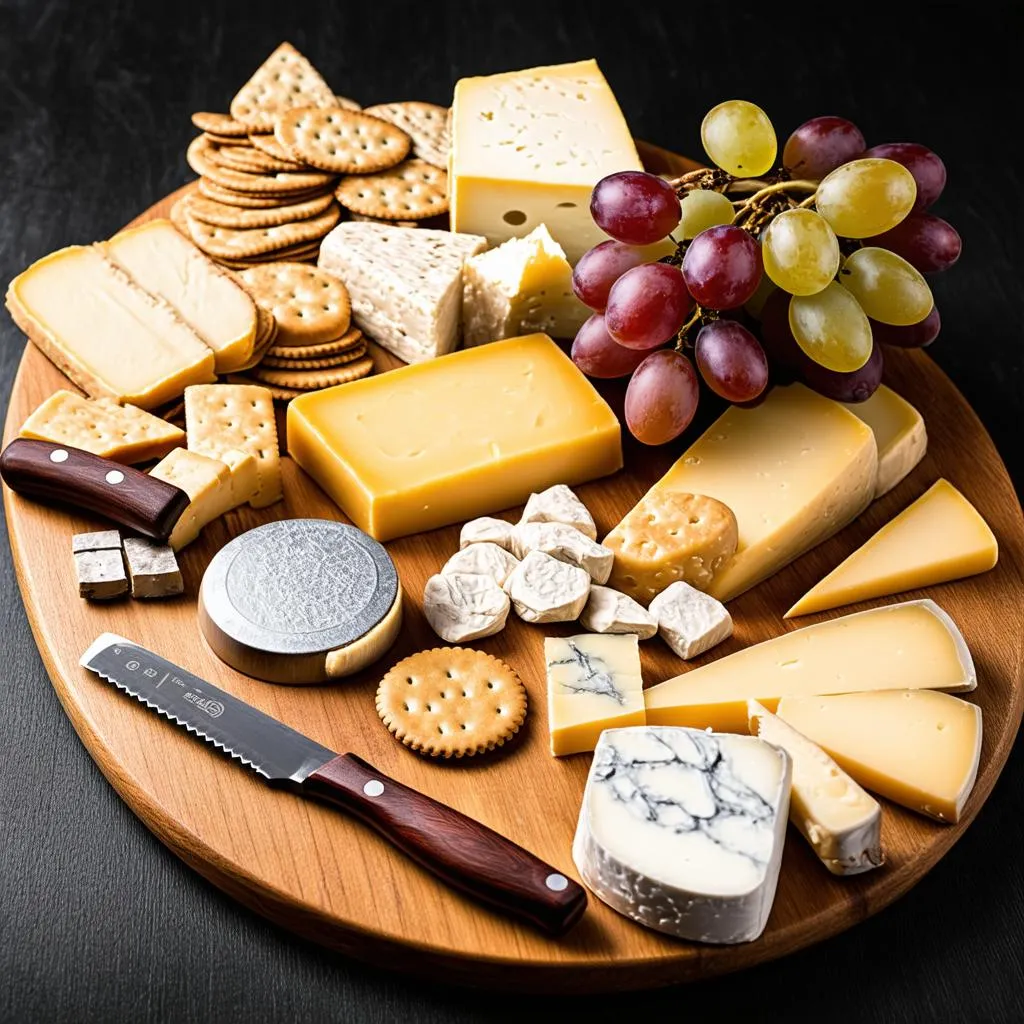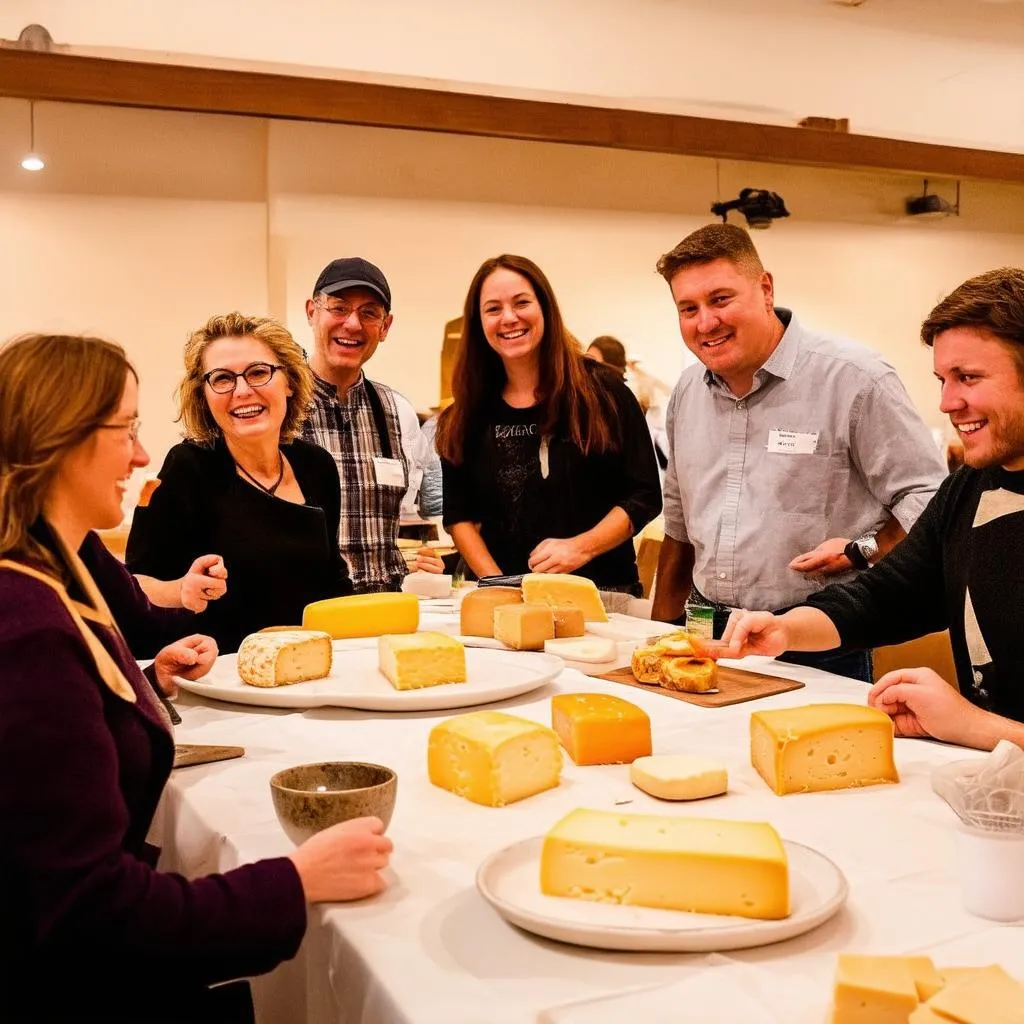Have you ever stood, mesmerized, in the cheese aisle of a Parisian market or a bustling New York deli, overwhelmed by the sheer variety of textures, aromas, and flavors? Don’t worry, every cheese connoisseur starts somewhere! This guide will take you on a delicious journey, transforming you from a casual cheese enthusiast into a true aficionado.
Understanding the Basics: It All Starts with Milk
Like any great adventure, becoming a cheese connoisseur begins with a single step – understanding the fundamentals. Cheesemaking, in its essence, is the art of transforming milk into a symphony of flavors and textures. The type of milk – cow, sheep, goat, or even buffalo – forms the foundation of a cheese’s character.
Milk Types and Their Influence:
- Cow’s Milk: Known for its mild and creamy nature, it gives us classics like Cheddar, Gouda, and Mozzarella.
- Sheep’s Milk: Richer and slightly sweeter, it’s the base for cheeses like Pecorino Romano and Roquefort.
- Goat’s Milk: Tangy and earthy, it produces cheeses like chèvre and Feta.
Embarking on Your Cheese Journey: A World of Exploration
The beauty of cheese lies in its diversity. From the creamy Brie of France to the sharp Cheddar of England, each region boasts unique traditions and techniques, resulting in a world of flavors waiting to be discovered.
Must-Try Cheeses and Their Origins:
- Camembert (Normandy, France): This bloomy-rind cheese is known for its creamy texture and earthy aroma.
- Parmigiano-Reggiano (Emilia-Romagna, Italy): Aged for months, this hard cheese has a nutty, complex flavor.
- Manchego (La Mancha, Spain): Made from sheep’s milk, this cheese has a firm texture and a slightly buttery, nutty taste.
 cheese board
cheese board
Tasting Like a Pro: Engaging Your Senses
Becoming a cheese connoisseur is about more than just knowing names and origins. It’s about developing a palate, a refined sense of taste that allows you to appreciate the nuances of each cheese.
The Art of Cheese Tasting:
- Observe: Take in the cheese’s appearance – its color, texture, and rind.
- Smell: Inhale deeply and note the aromas. Is it earthy, fruity, nutty?
- Taste: Take a small bite and let it linger on your tongue, savoring the flavors and textures.
Building Your Cheese Expertise: Resources and Tips
Like any good traveler, a cheese connoisseur seeks knowledge and guidance. Here are some resources to deepen your understanding and appreciation:
- Local Cheese Shops: Don’t be afraid to ask questions! Cheesemongers are passionate about their craft and can offer personalized recommendations.
- Books and Websites: Explore reputable cheese resources like “The World Atlas of Cheese” by Nancy Eekhof or websites like Culture Magazine.
Frequently Asked Questions:
- What cheese pairs well with red wine? Aged cheddars, Gouda, and Gruyere are excellent choices.
- What is the best way to store cheese? Wrap it loosely in cheese paper or parchment paper and store it in the refrigerator’s cheese drawer.
Travelcar.edu.vn: Your Guide to Culinary Adventures
For more culinary travel inspiration and tips on discovering the world’s best cheeses, visit travelcar.edu.vn. We can help you plan your next cheese-tasting adventure, whether it’s exploring the cheese caves of Roquefort, France, or indulging in a cheese-making class in Vermont, USA.
 cheese tasting
cheese tasting
Conclusion
Becoming a cheese connoisseur is a journey of discovery, one filled with delicious experiences and a deeper appreciation for this ancient culinary art. So, grab a cheese board, gather your friends, and embark on your cheese-tasting adventure! Remember, the most important ingredient is your curiosity and a love for all things cheese.